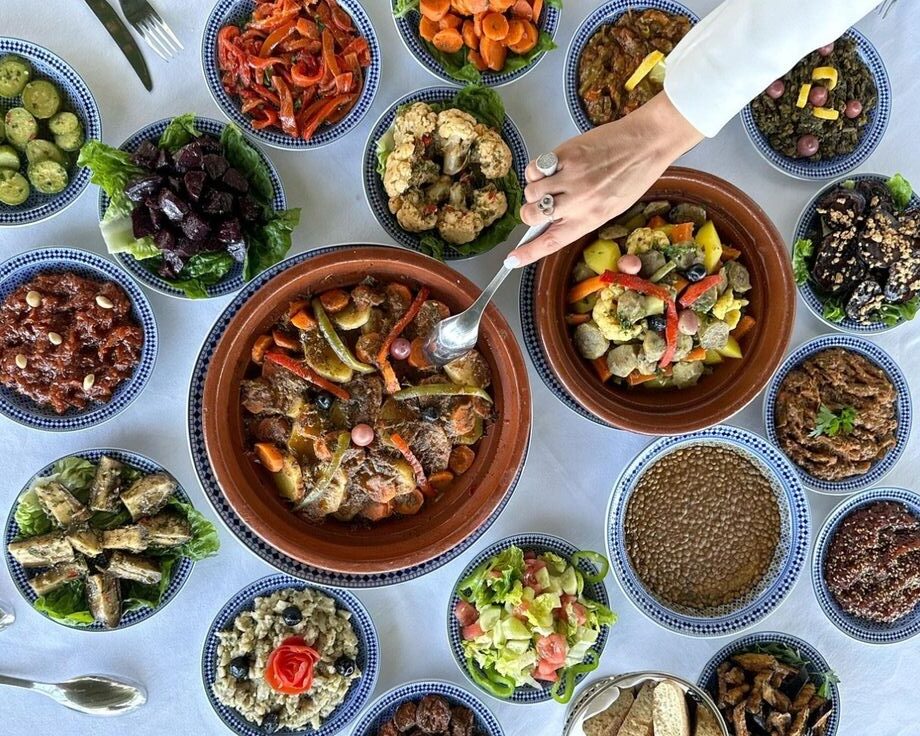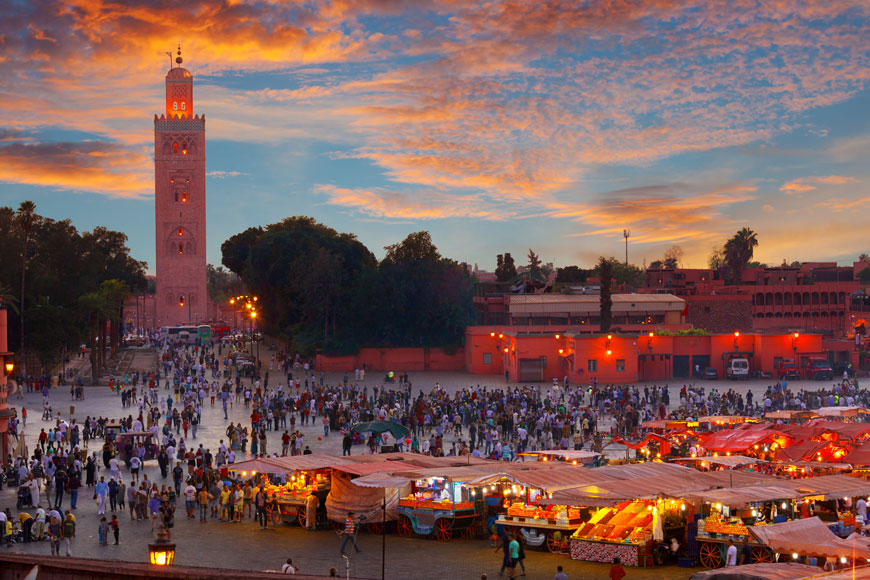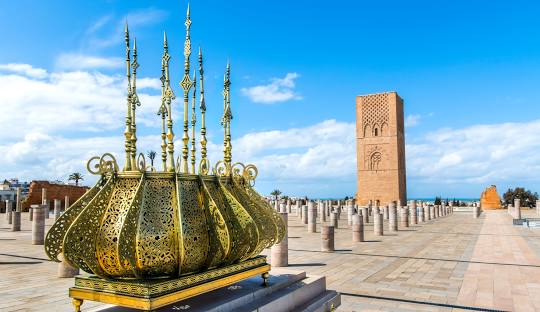
Moroccan Cuisine: A Culinary Journey in Marrakech
Marrakech, a vibrant city nestled in the heart of Morocco, is renowned for its rich cultural heritage, bustling souks, and stunning architecture. But perhaps one of the most captivating aspects of Marrakech is its cuisine. A melting pot of flavors and influences, Moroccan food is a feast for the senses. In this article, we’ll embark on a culinary journey through Marrakech, exploring the dishes, ingredients, and dining experiences that make this city a food lover’s paradise.
The Essence of Moroccan Cuisine
Moroccan cuisine is a harmonious blend of Berber, Arab, Andalusian, and Mediterranean influences. It is characterized by the use of a wide array of spices, fresh herbs, and bold flavors. Common spices include cumin, coriander, saffron, cinnamon, ginger, and paprika. Fresh herbs like mint, parsley, and cilantro are frequently used to enhance the taste of dishes.
The cuisine is also notable for its communal dining style, where family and friends gather around to share meals from a single large plate. This tradition emphasizes the importance of togetherness and hospitality in Moroccan culture.
Must-Try Moroccan Dishes in Marrakech
- Tagine:
- The tagine is perhaps the most iconic Moroccan dish. It is named after the earthenware pot in which it is cooked. Tagines are slow-cooked stews that can be made with various meats (such as chicken, lamb, or beef), vegetables, and fruits. Common combinations include chicken with preserved lemons and olives, lamb with prunes and almonds, and vegetable tagine with an array of seasonal produce. The slow-cooking process allows the flavors to meld beautifully, resulting in a rich and aromatic dish.
- Couscous:
- Often considered Morocco’s national dish, couscous is made from tiny steamed granules of semolina wheat. It is typically served with a meat or vegetable stew spooned over it. Fridays are traditionally couscous day in Morocco, where families come together to enjoy this dish after the midday prayer. The dish is often garnished with raisins, almonds, and a generous serving of broth.
- Pastilla (B’stilla):
- A unique and flavorful dish, pastilla is a savory pie that combines sweet and savory elements. It is usually made with layers of thin, flaky pastry (warqa) filled with shredded pigeon or chicken, almonds, eggs, and spices, all dusted with powdered sugar and cinnamon. The result is a delightful contrast of textures and flavors.
- Harira:
- This hearty soup is traditionally eaten to break the fast during Ramadan, but it can be enjoyed year-round. Harira is made with tomatoes, lentils, chickpeas, rice, and a variety of herbs and spices. It is often served with dates and a squeeze of lemon juice for added zest.
- Mechoui:
- Mechoui refers to whole roasted lamb, which is a special dish typically prepared for celebrations and special occasions. The lamb is seasoned with spices and slow-roasted until it is tender and flavorful. It is usually served with bread and accompanied by an assortment of side dishes.
- Zaalouk:
- Zaalouk is a popular Moroccan salad made from cooked eggplant and tomatoes, seasoned with garlic, paprika, cumin, and olive oil. It is typically served as a dip with crusty bread and makes for a delicious appetizer.
Street Food Delights
Marrakech’s bustling streets and vibrant markets (souks) are brimming with street food vendors offering a tantalizing array of snacks and treats. Some must-try street foods include:
- Msemen: A flaky, layered flatbread that is often enjoyed with honey or stuffed with savory fillings.
- Briouats: Small, triangular pastries filled with meat, cheese, or sweet almond paste, and then fried to golden perfection.
- Chebakia: A traditional Moroccan cookie made from dough that is shaped into a flower, fried, and then soaked in honey and sprinkled with sesame seeds. These are particularly popular during Ramadan.
Dining Experiences in Marrakech
- Djemaa el-Fna:
- The heart of Marrakech’s culinary scene is undoubtedly the Djemaa el-Fna square. As the sun sets, the square transforms into a bustling open-air food market. Food stalls offer a variety of traditional dishes, from grilled meats and seafood to steaming bowls of harira and freshly squeezed orange juice. The lively atmosphere, combined with the delicious aromas, makes for an unforgettable dining experience.
- Traditional Riads:
- For a more intimate and authentic dining experience, many visitors opt to dine in a traditional riad (a type of Moroccan house or palace with an interior garden or courtyard). Riads often serve home-cooked meals that showcase the best of Moroccan cuisine. Dining in a riad provides a unique opportunity to enjoy delicious food in a serene and beautiful setting.
- Cooking Classes:
- For those who want to take a piece of Morocco home with them, cooking classes are a fantastic way to learn the secrets of Moroccan cuisine. Many classes include a visit to a local market to buy fresh ingredients, followed by a hands-on cooking session where participants learn to prepare traditional dishes.
Conclusion
Marrakech offers a culinary adventure like no other, where every meal is an opportunity to explore the rich and diverse flavors of Moroccan cuisine. Whether you’re savoring a fragrant tagine, indulging in a sweet pastilla, or enjoying the vibrant street food, the food in Marrakech is sure to leave a lasting impression. Embrace the warmth and hospitality of Moroccan dining, and let your taste buds be your guide on this unforgettable gastronomic journey.
Recent Posts
Empowering Adventures: A Solo Female Travel Guide to Morocco in 2025
Affordable Ways to Fly to Marrakech from Manchester: Your Ultimate Guide
Experience Luxury at the Hotel Sofitel Lounge and Spa Marrakech: A Gateway to Relaxation and Elegance

Marrakech

Chefchaouen




